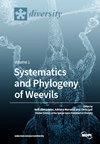整合物种分布模型估算陕西中秦岭森林麝种群规模
IF 2.1
3区 生物学
Q2 BIODIVERSITY CONSERVATION
引用次数: 0
摘要
了解动物种群规模对于制定科学的管理政策至关重要,尤其是对濒危物种而言。陕西秦岭中部地区是森林麝的重要栖息地,但研究不足,缺乏对其种群规模的估计。本文利用地形、土地利用、生物气候等变量和森林麝的分布数据,构建了秦岭中部森林麝的物种分布模型。采用时间-事件(Time-to-Event, TTE)模型对所选调查区域的森林麝种群密度进行估算。利用物种分布模型提供的适宜生境面积,从调查区域外推估算了陕西秦岭中部地区的种群密度。我们估计陕西秦岭中部森林麝的种群规模约为2722±788只。类似的人口估计方法可以更广泛地应用,特别是在调查资源有限的地区。本文章由计算机程序翻译,如有差异,请以英文原文为准。
Integrating Species Distribution Models to Estimate the Population Size of Forest Musk Deer (Moschus berezovskii) in the Central Qinling Mountains of Shaanxi
Understanding the population size of animals is crucial for formulating scientific management policies, especially for endangered species. The central area of the Qinling Mountains in Shaanxi is a vital area for forest musk deer, but research is insufficient and estimates of its population size are lacking. In this study, we constructed a species distribution model for the forest musk deer in the central Qinling Mountains in Shaanxi using topography, land-use, and bioclimatic variables alongside forest musk deer occurrence data. The Time-to-Event (TTE) model was employed to estimate the population density of forest musk deer in the selected survey area. By utilizing the suitable habitat area provided by the species distribution model, the population density in the central Qinling Mountains of Shaanxi was estimated by extrapolating from the survey area. Our estimate of the population size of forest musk deer in the central Qinling Mountains of Shaanxi is approximately 2722 ± 788. Similar population estimation methods could be more widely applied, especially in areas with limited survey resources.
求助全文
通过发布文献求助,成功后即可免费获取论文全文。
去求助
来源期刊

Diversity-Basel
Environmental Science-Ecological Modeling
CiteScore
3.40
自引率
12.50%
发文量
925
审稿时长
11 weeks
期刊介绍:
Diversity (ISSN 1424-2818) is an international and interdisciplinary journal of science concerning diversity concept and application, diversity assessment and diversity preservation. It is focused on organismic and molecular diversity. It publishes reviews, regular research papers and short notes in the regular issues. Related news and announcements are also published. Our aim is to encourage scientists to publish their experimental and theoretical results in as much detail as possible. Therefore, there is no restriction on the length of the papers. Full experimental details must be provided so that the results can be reproduced.
 求助内容:
求助内容: 应助结果提醒方式:
应助结果提醒方式:


